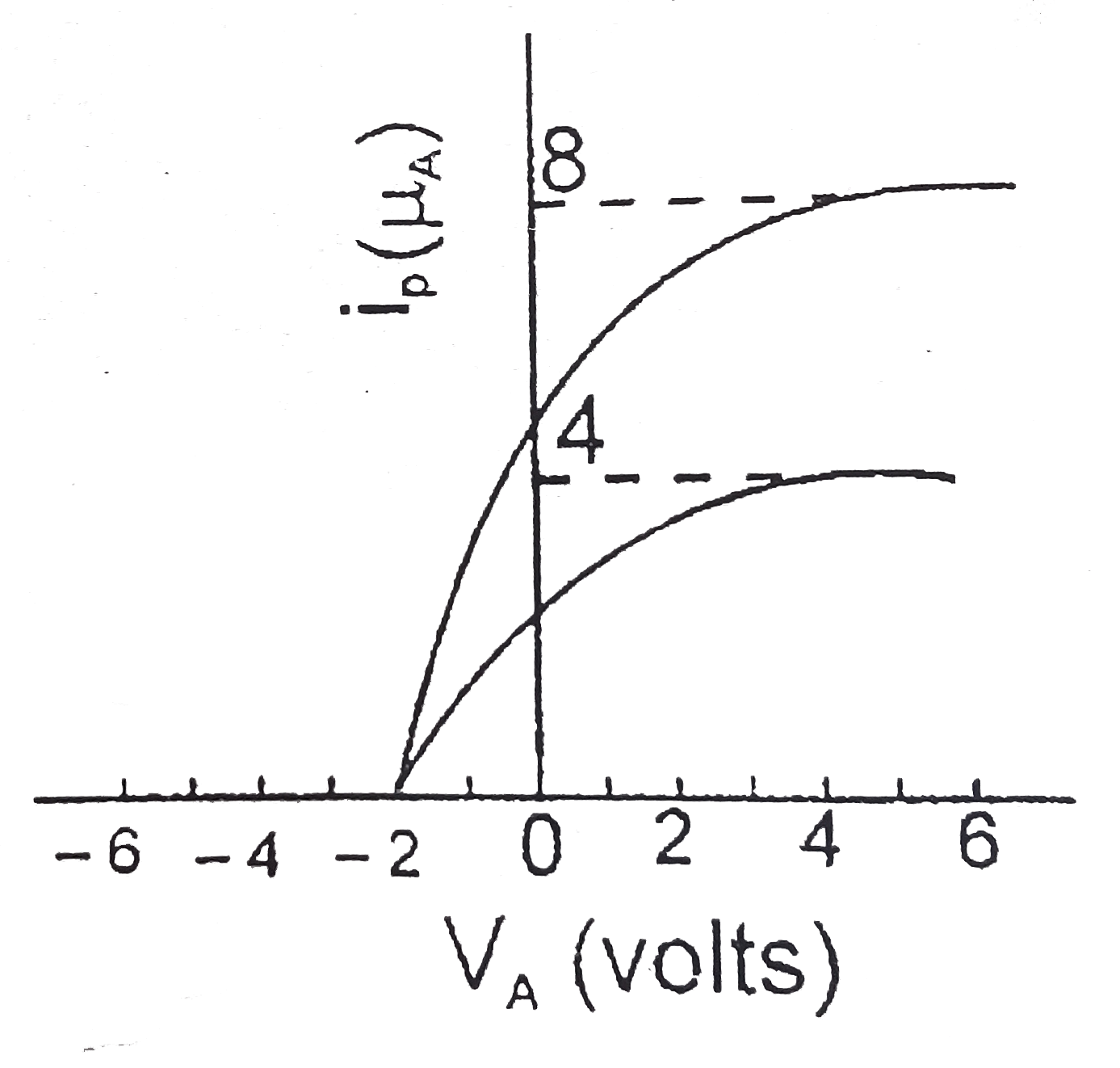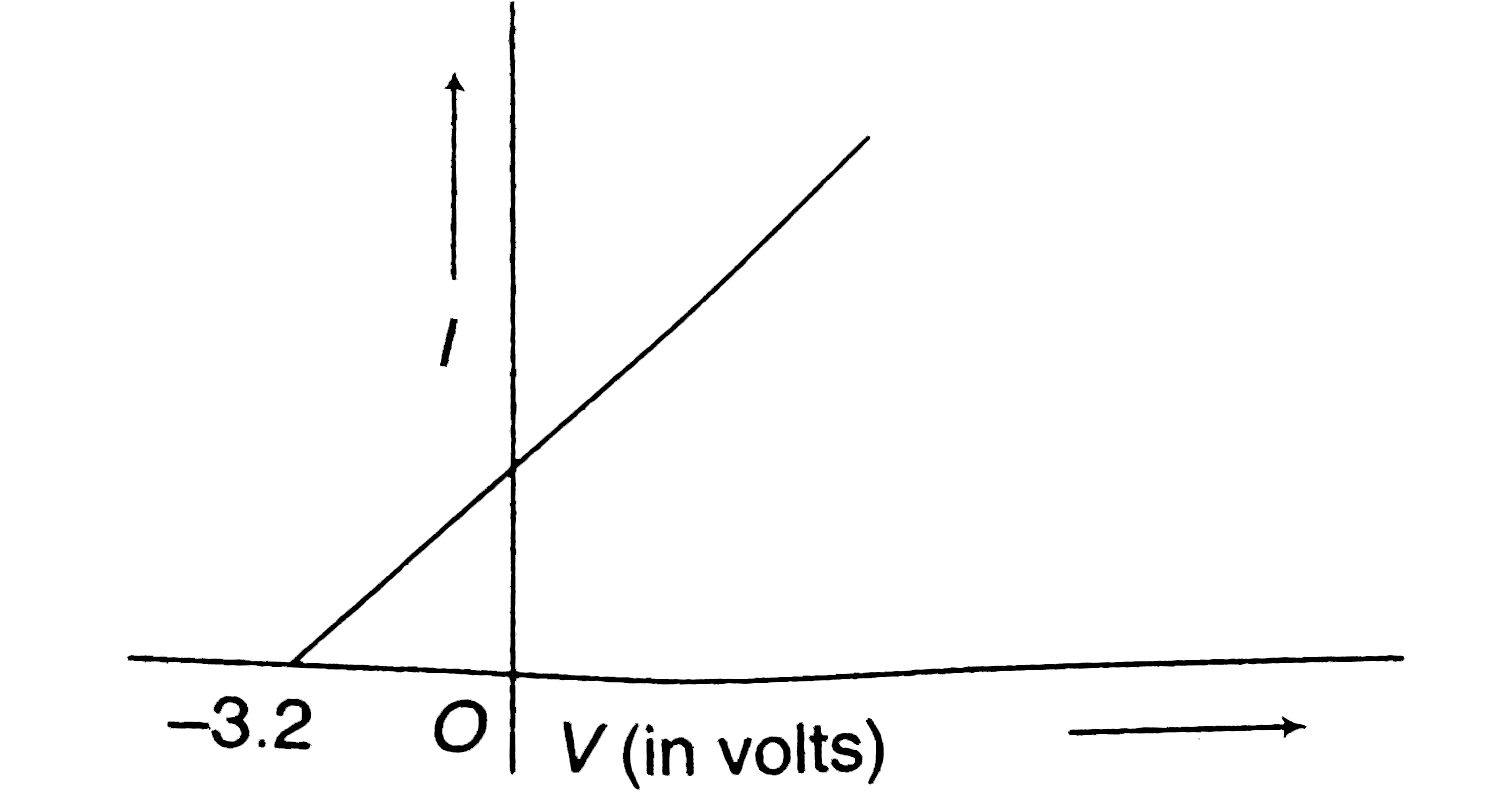In a photoelectric experiment set up, photons of energy 5eV falls on the cathode having work function 3eV (a) if the saturation current is i=4μA for intensity 10−5W/m2, then plot a graph between anode potential and current (b) Also draw a graph for intensity of incident radiation 2×10−5W/m2
Maximum kinetic energy of the photoelectrons would be Kmax=E−W=(5−3)eV=2eV
Therefore, the stopping potential is 2V. Saturation current depends on the intensity of light incident. When the intensity is doubled the saturation current will also become two fold. the corresponding graphs are shown in figure.
_E01_364_S01.png)
Topper's Solved these Questions
- BOOK - ALLENCHAPTER - SIMPLE HARMONIC MOTIONEXERCISE - Solved Example3videos
SIMPLE HARMONIC MOTION
- BOOK - ALLENCHAPTER - SIMPLE HARMONIC MOTIONEXERCISE - X Rays : Solved Example2videos
SIMPLE HARMONIC MOTION
- BOOK - ALLENCHAPTER - SIMPLE HARMONIC MOTIONEXERCISE - Paragraph3videos
SIMPLE HARMONIC MOTION
- BOOK - ALLENCHAPTER - RACEEXERCISE - Basic Maths (Wave Motion & Dopplers Effect) (Stationary waves & doppler effect, beats)25videos
RACE
- BOOK - ALLENCHAPTER - TEST PAPEREXERCISE - PHYSICS4videos
TEST PAPER
Similar Questions
In a photon electric experiment set upm , photons of energy 5eV falls on the cathode having work function 3eV (a) if the seturation current is i=4μA for intensity 10−5W/m2, then plot a graph between anode potential and current (b) Also draw a graph for intensity of incident radiation 2×10−5W/m2
View SolutionIn a photoelectric effect experiment, photons of energy 5eV are incident on the photocathode of work function 3eV. For photon intensity IA=1015m−2s−1, saturation current of 4.0μA is obtained. Sketch the variation of photocurrent ip against the anode voltage Va in the figure below for photon intensity IA ( curve A) and IB=2×1015m−2s−1 (curve B) ( in JEE graph was to be drawn in the answer sheet itself.)
 View Solution
View Solution
Knowledge Check
- Question 1 - Select One
A photon energy 3.4eV is incident on a metal having work function 2eV. The maximum K.E. of photoelectrons is equal to
A1.4eVB1.7eVC5.4eVD6.8eV - Question 2 - Select One
Photons of energy 1.5 eV and 2.5 eV are incident on a metal surface of work function 0.5 eV. What is the ratio of the maximum kinetic energy of the photoelectrons ?
A1:2B2C3D1:4 - Question 3 - Select One
Two differenct photons of energies, 1 eV and 2.5 eV, fall on two identical metal plates having work function 0.5 eV, Then the ratio of maximum KE of the electrons emitted from the two surface is -
A1:2B1:4C2:1D4:1
In a photoelectric experiment the relation between applied potential difference between cathode and anode V and the photoelectric current cathode and anode V and the photoelectric current l and was found to be shown in graph below. If planck's constant h=6.6×10−34Js, the frequency of incident radiation would e nearly (in s−1)
 View Solution
View SolutionThe radiations of 1 eV and 2.5 eV are incident on a metal having a work function of 0.5 eV . The ratio of their maximum velocities is
View SolutionIn a photoelectric effect experiment , photons of energy 5.0 eV are incident on metal surface . They liberate electrons which are just stopped by an electrode at a potential of 3.5 eV with respect to metal . The work function of the metal surface in eV is :
View SolutionTwo photons, each of energy 2.5 eV are simultaneously incident on the metal surface. If the work function of the metal is 4.5 eV, then from the surface of metal
View SolutionIn a photoelectric effect experiment, photons of energy 5eV are incident on a metal surface They liberate photoelectron which are just stopped by an electrode at a potential of −3.5V with respect to the metal. The work fuction of the metal is
View Solution

